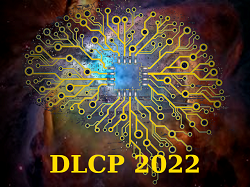Speaker
Description
V.V. Korenkov, A.G. Reshetnikov, S.V. Ulyanov, P.V. Zrelov
MLIT, JINR
The physical interpretation of self-organization control process on quantum level is discussed based on the quantum information-thermodynamic models of the exchange and extraction of quantum (hidden) value information from/between classical particle’s trajectories in particle swarm [1,2]. Main physics and information thermodynamics aspects of quantum intelligent control of classical control objects discussed and described from control Benchmark models viewpoint design on the basis of new laws of quantum Lagrange / Hamilton deep machine learning.
1. Physics of quantum hidden information phenomena. New types of quantum correlations (as behavior control coordinator with quantum computation by communication) and information transport (value information) between particle swarm trajectories (communication through a quantum link) are introduced.
2. Quantum logic of intelligent classical system control. The structure of developed quantum fuzzy inference (QFI) model includes necessary self-organization properties and realizes a self-organization process as a new quantum search algorithm (QSA). In particular case, in intelligent control system (ICS) structure, QFI system is a QSA block, which performs post-processing of the results of fuzzy inference of each independent fuzzy controller (FC) and produces the generalized control signal output. In this case the on-line output of QFI is an optimal robust control signal, which combines best features of each independent FC outputs (self-organization principle). For design of FC - KB original structures of quantum neural networks and quantum genetic algorithm developed and applied.
3. Quantum software engineering of quantum intelligent control physics law. Quantum soft computing optimizer toolkit of KB – design processes is described. Benchmarks of robust KB design from imperfect FC - KB as the new quantum synergetic information effects of extracted quantum information demonstrated. Moreover, the new force control law from quantum thermodynamic described: with extracted hidden quantum information from classical control signal states (on micro-level) possible to design in on-line new control force that can produce on macro-level more value work amount than the work losses on the extraction of this amount of hidden quantum information.
It is a new control law of physics-cybernetics open hybrid systems including port-Hamiltonian controlled dynamic objects [3].
4. Applications. Effective application of new quantum intelligent controller in mega-science project NICA, intelligent cognitive robotics and quantum drones for applications in project “Industry 5.0” demonstrated [4]. Perspective applications of quantum software engineering discussed.
Conclusions
Therefore, the operation area of such ICS can be expanded greatly as well as its robustness. Robustness of control signal is the background for support the reliability of control accuracy in uncertainty environments. The effectiveness of the developed QFI model is illustrated for important case - the application to design of robust intelligent control system of unstable essentially nonlinear control object in unpredicted control situations (autonomous mobile robots, robotic manipulators, swarm robotics with information exchange etc.).
References
1. Ulyanov S.V. System and method for control using quantum soft computing. - US patent No 6,578,018B1, 2003.
2. Ulyanov S.V. Self-organizing quantum robust control methods and systems for situations with uncertainty and risk. - Patent US 8788450 B2, 2014.
3. Ulyanov S. V. Quantum Algorithm of Imperfect KB Self-organization Pt I: Smart Control - Information-Thermodynamic Bounds // Artificial Intelligence Advances. - 2021. - Vol. 3. - No 2. - Pp. 13-36; https://doi.org/10.30564/aia.v3i2.3171.
4. Korenkov V.V., Reshetnikov A.G., Ulyanov S.V., Zrelov P.V. Intelligent cognitive robotics. Vol. 2, Pt. 2: Quantum supremacy of quantum intelligent control – quantum neural networks and quantum genetic algorithms in quantum deep learning. – M.: Kurs, 2022.
| Agreement to place | Participants agree to post their abstracts and presentations online at the workshop website. All materials will be placed in the form in which they were provided by the authors |
|---|

